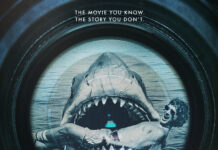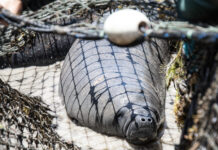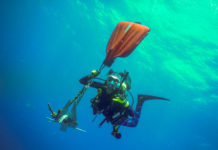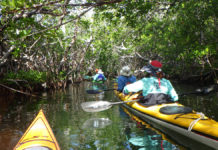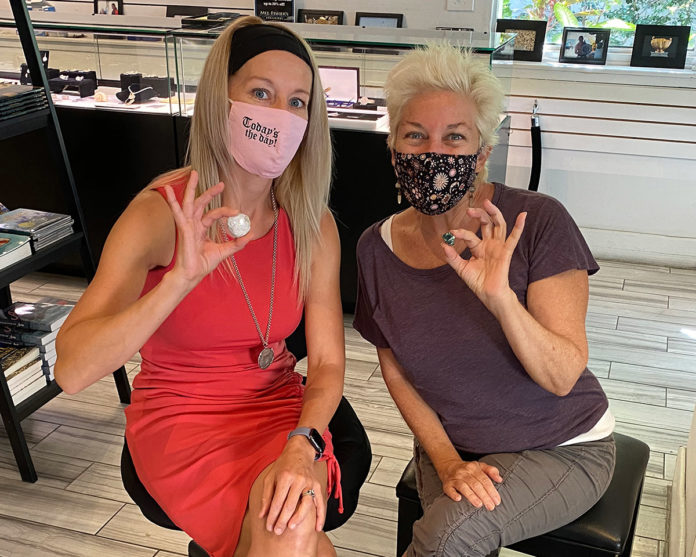
Karolina Calderwood, left, and Carol Tedesco, right, met at the Mel Fisher’s Treasures shop on Duval Street Monday to examine and photograph two exceptional artifacts previously recovered from the Nuestra Senora de Atocha shipwreck: an unusual silver “piece of eight” treasure coin and a 43.72ct rough jadeite stone. What makes these two particular pieces so noteworthy? “Almost all of the more than 150,000 silver coins recovered from the Atocha bear the Habsburg shield, which is made up of multiple fields that each represent individual arms of lands under Spanish rule at that time,” said store manager Calderwood. “This coin is quite a rarity because rather than having the area of New Burgundy represented by the typical and expected field of small fleur-de-lys, we see a field of small stars instead. This is a quite rare feature, though not unknown. We can only speculate as to why the coin die maker substituted stars for the fleur-de-lys,” she said.
“As for the jadeite stone, the precious mineral jade and other similar hard green stones were prized—above gold and above emeralds—among the Olmec, Maya, Aztec, Toltec, and other pre-Columbian New World inhabitants,” Tedesco explained. “Called chalchihuites, the stones were symbolic of water, fertility, rulership, young green maize, and of wind breath and the soul. Their value was so great that the Spanish soldier and chronicler Bernal Díaz del Castillo (c. 1496-1584), in his True History of the Conquest of New Spain, described how after the death of Moctezuma, with the Spanish force under siege and preparing to retreat from Mexico, conquistador Hernán Cortés loaded eight horses and more than eighty ‘friendly Tlaxcalans’ with Mexican gold, jewels and silver, as much as each could carry. The rest, Díaz wrote, ‘over seven hundred thousand pesos in gold’ was piled up in heaps for any soldiers willing to carry it. Díaz wrote that while many of the soldiers loaded themselves with gold, he chose to take only four chalchihuites, the value of which later, ‘served me well in healing my wounds and getting me food.”’
“September 6, 2022 will be the 400th anniversary of the sinking of the Atocha, along with other vessels of the 1622 Tierra Firme fleet,” said Kim Fisher, son of the late treasure hunter Mel Fisher and president of the company that bears his name. “More than 30 years after locating the ship’s primary cultural deposit, our team is always thrilled to see how this amazing story continues to unfold through the recovered artifacts. It’s a lifetime of adventure and learning, and we look forward to celebrating the anniversary next year with lots of entertaining and educational events,” he said. For more information about Mel Fisher’s Treasures, email melfisher@melfisher.com or visit www.melfisher.com.



